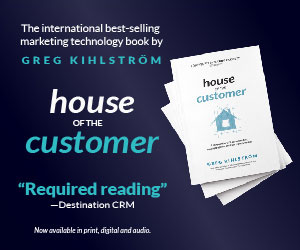This article was based on the interview with Chris Bach of Netlify by Greg Kihlström for The Agile Brand with Greg Kihlström podcast. Listen to the original episode here:
Headless e-commerce allows for the decoupling of the front end and back end of a website or application. Traditionally, websites and applications were built as monoliths, where all the components, such as the business logic, data, template engine, UI, and website functionality, were tightly integrated into a single piece of software. This approach worked well in the early days of the web but became problematic as businesses grew and required more digital touchpoints.
With headless e-commerce, the front end and back end are separated, allowing for more flexibility and scalability. The front end, which is what users see and interact with, can be built using specialized tools and technologies that are optimized for delivering a great user experience. The back end, which handles the transactional and data management aspects of the website or application, can be built using different software that is specifically designed for those tasks.
This decoupling of the front end and back end allows businesses to take advantage of best-in-class solutions for each component. For example, they can use a headless API that is highly optimized for transactional processes, a content management system that excels at managing and delivering content, and other specialized software for specific functionalities like commenting or social media integration.
One of the main reasons why retailers are moving towards headless e-commerce is the ability to improve their time to market. With traditional monolithic architectures, making even small changes or updates to the website or application often required a lengthy process of submitting tickets and waiting for development teams to implement them. This slow time to market can be frustrating for marketers who want to quickly iterate and optimize their customer experiences.
By decoupling the front end and back end, marketers can make changes to the front end without disrupting the back end processes. This means they can experiment with different user experiences, test new features, and quickly roll out updates without waiting for development cycles. It empowers marketers to have more control and agility in delivering personalized and engaging customer experiences.
Headless e-commerce also allows businesses to adapt to the ever-evolving digital landscape. With the proliferation of new devices, platforms, and touchpoints, it’s essential for retailers to be able to deliver consistent and optimized experiences across all channels. By decoupling the front end and back end, businesses can easily adapt and scale their customer experiences to meet the demands of new technologies and platforms.
Headless e-commerce provides retailers with the opportunity to decouple the front end and back end of their websites or applications. This decoupling allows for more flexibility, scalability, and agility in delivering personalized and optimized customer experiences. By using specialized tools and technologies for each component, businesses can improve their time to market and adapt to the ever-changing digital landscape. Headless e-commerce is revolutionizing the way retailers approach their online presence and is becoming increasingly popular in the industry.










